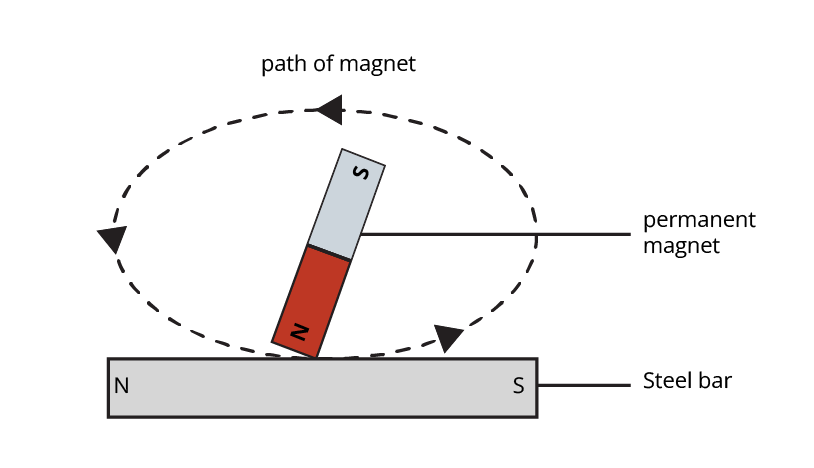CBSE Important Questions for Class 6 Science Fun with Magnets - 2025-26
FAQs on CBSE Important Questions for Class 6 Science Fun with Magnets - 2025-26
1. What is the main difference between magnetic and non-magnetic materials? Give two examples of each for the exam.
The key difference is their reaction to a magnet. Magnetic materials are those that get attracted by a magnet. For exams, remember examples like iron, nickel, and cobalt. On the other hand, non-magnetic materials are not attracted by a magnet at all. Common examples are wood, plastic, rubber, and glass.
2. How can you make your own magnet from an iron bar? Describe the method briefly.
You can create a temporary magnet using the single-touch method, an important practical question. Place an iron bar on a table. Take a strong bar magnet and place one of its poles on one end of the iron bar. Stroke the magnet along the bar's entire length to the other end. Lift the magnet away and bring it back to the starting point to repeat the process about 30-40 times. It is crucial to always stroke in the same direction and not rub back and forth.
3. What are the poles of a magnet, and what is the law of magnetic poles?
Every magnet has two ends where its magnetic strength is concentrated. These are called the poles of the magnet: the North pole (N) and the South pole (S). The fundamental law, which is a frequently asked question, is that like poles repel each other (N-N or S-S), while unlike poles attract each other (N-S).
4. List some important uses of magnets that could be asked in a 3-mark question.
For a 3-mark question, you can list the following important uses of magnets:
In magnetic compasses and mariner's compasses to find directions.
In scrapyards, powerful magnets are used in cranes to lift and separate iron and steel objects from junk.
Inside devices like electric motors, generators, speakers, and hard drives.
On refrigerator doors, pencil boxes, and some toys to act as a latch or fastener.
In medical devices like MRI machines to scan inside the human body.
5. Why does a freely suspended magnet always point in the North-South direction?
This is a key concept. A freely suspended magnet aligns itself in a North-South direction because the Earth itself behaves like a giant bar magnet with its own magnetic North and South poles. The North pole of the suspended magnet is attracted to the Earth's magnetic South Pole (which is located near the geographic North Pole), and the magnet's South pole is attracted to the Earth's magnetic North Pole. This interaction forces the alignment.
6. Why is repulsion considered the surest test for magnetism, not attraction?
This is a higher-order thinking question (HOTS). Attraction can happen between a magnet and a simple magnetic substance (like an iron nail). However, repulsion can only happen between two actual magnets. An unmagnetised piece of iron will never be repelled by a magnet. Therefore, if an object repels a magnet, it proves that the object itself is also a magnet, making repulsion the definitive test.
7. What are three important precautions you must take to prevent a magnet from losing its magnetic properties?
To ensure a magnet retains its strength, you must avoid the following, as per the CBSE syllabus:
Heating: Do not heat a magnet, as it can destroy its magnetic properties.
Hammering or Dropping: Avoid hitting magnets with a hammer or dropping them from a height.
Improper Storage: Do not store magnets without keepers. Bar magnets should be stored in pairs with unlike poles adjacent, separated by wood, and with soft iron keepers across the ends.
8. How important is the chapter 'Fun with Magnets' for the Class 6 Science exam 2025-26?
For the CBSE Class 6 Science exam (2025-26), 'Fun with Magnets' is a foundational chapter with definite scoring potential. You can expect important questions covering the core properties of magnets, the difference between magnetic and non-magnetic materials, and the directional property used in a compass. Mastering the concepts of attraction and repulsion is crucial for both objective and short-answer questions.

























